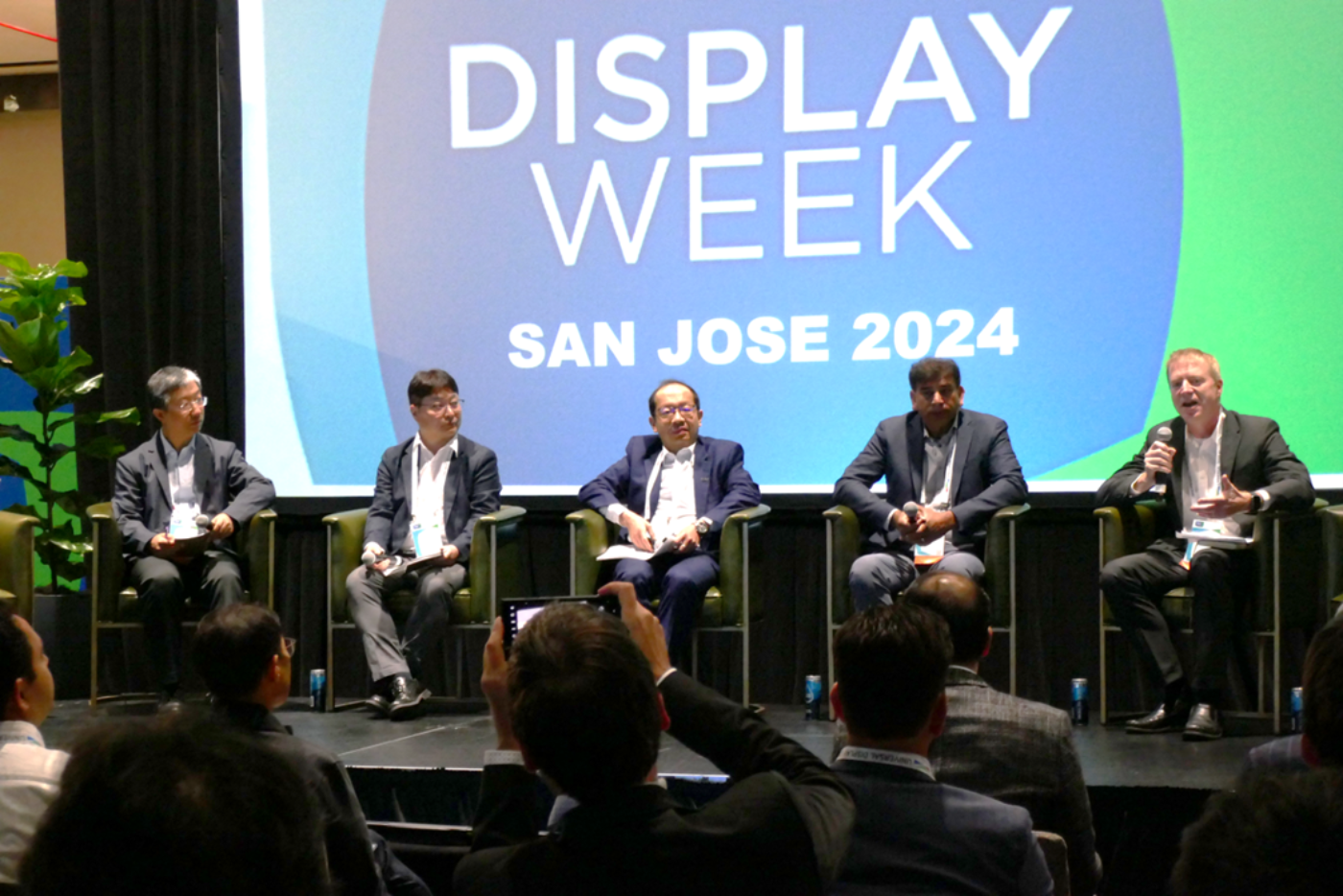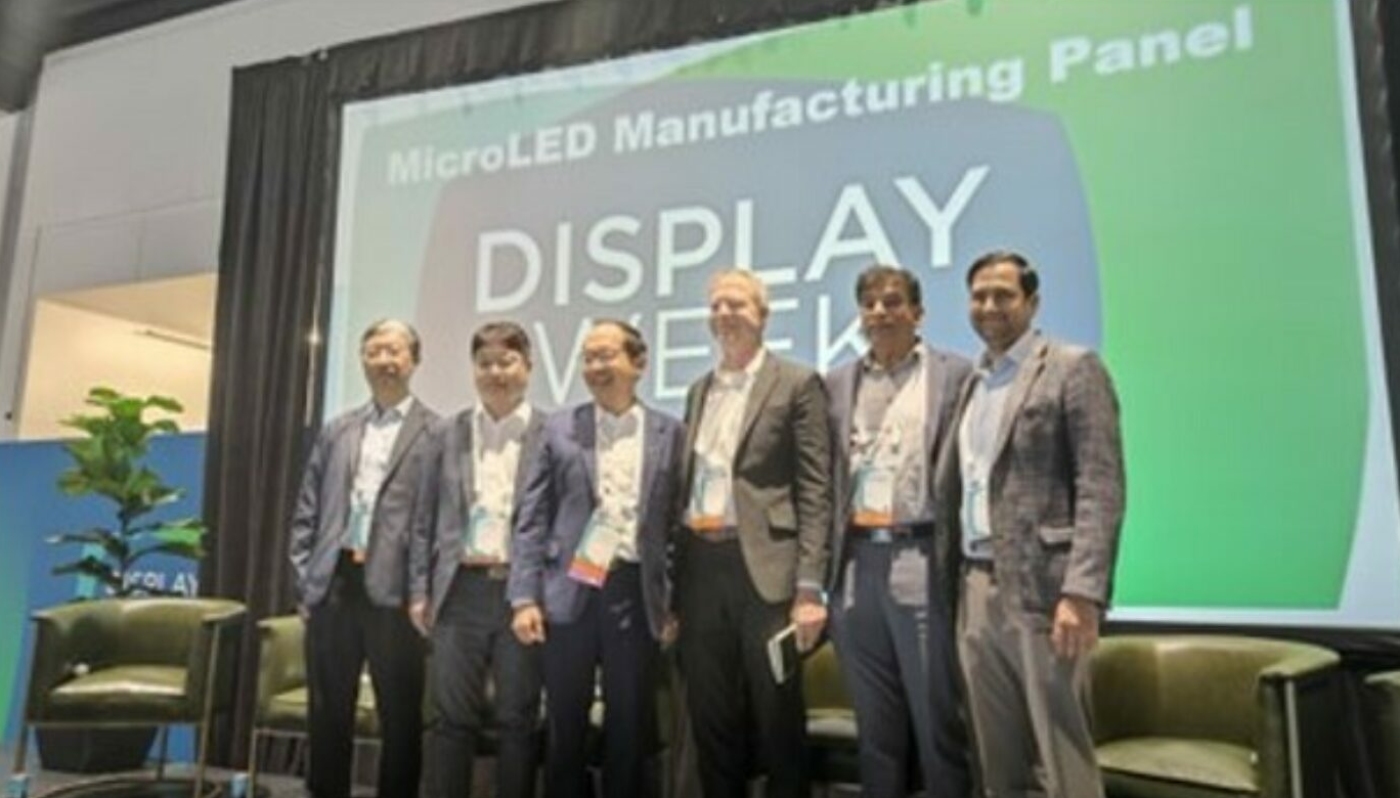MicroLED製造パネルディスカッションの概要報告 [Display Week 2024]
関連調査レポート MicroLED Display Technology and Market Outlook Report (2024年5月アップデート版) の詳細仕様・販売価格・一部実データ付き商品サンプル・WEB無料ご試読は こちらから お問い合わせください。
これらDSCC Japan発の分析記事をいち早く無料配信するメールマガジンにぜひご登録ください。ご登録者様ならではの優先特典もご用意しています。【簡単ご登録は こちらから 】
冒頭部和訳
米国で先週開催された Display Week 2024 では、MicroLED製造の課題を議論する90分間の興味深いパネルディスカッションが展示ホールで実施された。このパネルディスカッションではDSCCのBob O’Brienがモデレーターを務め、聴衆との質疑応答も交えて進められた。パネリストは以下の各氏 (敬称略)。
・Jong-Moo Huh (Vice President of Samsung Display)
・Alex Chen (CTO of BOE MLED Technology)
・Weilung Liau (CTO of AUO Corporation)
・Nag Patibandla (Vice President, Advanced Deposition Products Office of the CTO, Applied Materials)
What We Learned from the MicroLED Manufacturing Panel Session
※ご参考※ 無料翻訳ツール (Google)At Display Week 2024, a fascinating 90 min panel session took place in the Exhibit Hall to discuss the challenges of MicroLED manufacturing. The session was moderated by DSCC’s Bob O’Brien and the audience was allowed to ask questions.
The panelists were:
- Jong-Moo Huh (Vice President of Samsung Display)
- Alex Chen (CTO of BOE MLED Technology)
- Weilung Liau (CTO of AUO Corporation)
- Nag Patibandla (Vice President, Advanced Deposition Products Office of the CTO, Applied Materials)
MicroLED is a new display technology and still faces many challenges to reduce costs. Applied Materials is developing an architecture based on UV MicroLEDs and quantum dot color conversion. The goal is to simplify the mass transfer process and use existing fabs for the backplane. Applied Materials will have a pilot line running next year.
AUO is making efforts to reduce the LED chip size and enlarge the mass transfer process generation. AUO has invested in Ennostar and PlayNitride to create a strong Taiwanese ecosystem focused on these objectives.
Samsung talked about the need to increase productivity, using larger substrates, faster mass transfer and more reliable bonding technologies. BOE noted that mass transfer equipment currently available was still not compatible with the substrate sizes used by the display industry.
Although Apple never issued a statement about the cancellation of its MicroLED project, the panelists were asked about the impact on the industry and whether smart watches could still be a valid application. AUO is still optimistic and targets many applications. AUO has received positive feedback since starting mass production at the end of last year. A second production line (larger substrate size, smaller chips) will be in operation next year.
Small displays such as smartwatches remain the most accessible and cost-effective, according to BOE. However, there are still issues with efficiency and overall power consumption of MicroLED displays. Samsung believes a watch is still possible but automotive is the application where MicroLED strongly differentiates against OLED.
Another way to stand out against OLED is with form factor. MicroLED displays can be made in any shape or size. AUO has also demonstrated transparent displays. For BOE, winning against OLED will require high brightness (for HDR content) as well as great reliability.
On the topic of sensor integration, Samsung also thinks that this is a way to open new markets where OLED does not yet have a stronghold. For Applied Materials, the question remains: what data do we want to collect? AUO believes infrared sensors may be useful for automotive displays, while BOE suggests temperature and touch sensors.
There are also diverging views about quantum dot color conversion. Samsung is concerned about reliability and the cost of passivation. For Applied Materials, color conversion helps reduce the discrepancy between blue and red performance. AUO thinks red quantum dots are particularly useful to minimize performance drop at high operating temperatures. BOE says the deciding factor should be power consumption.
Driving with MicroIC can help lower power consumption, according to Samsung. AUO believes that the cost of microIC is an issue, so TFT backplanes will be cheaper for most applications. MicroIC development takes time according to BOE. It will be necessary to invest in different testing equipment.
On the topic of testing, the panel agrees that photoluminescence (PL) tests should be replaced by electroluminescence (EL) tests. It would be ideal to test all the LEDs on the display, but this is not currently possible.
What will be the best LED size to find the right balance between performance and cost? Around 10 μm according to AUO and Applied Materials. Samsung agrees but notes that 5 μm would allow redundancy (multiple LEDs per pixel). BOE says 5 μm for vertical LEDs, but flip chip technology will use 15 μm or higher.
At the end of the session, Bob asked when we would see a MicroLED TV under $10,000. Only Applied Materials was willing to make a guess: maybe in four years.


